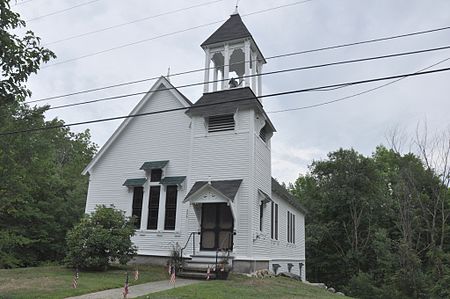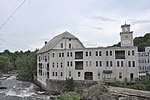Union Chapel (Hillsborough, New Hampshire)
19th-century churches in the United StatesChapels in the United StatesChurches completed in 1887Churches in Hillsborough County, New HampshireHillsborough, New Hampshire ... and 5 more
National Register of Historic Places in Hillsborough County, New HampshireNew Hampshire State Register of Historic PlacesProperties of religious function on the National Register of Historic Places in New HampshireQueen Anne architecture in New HampshireUse mdy dates from August 2023

Union Chapel is a historic chapel in Hillsborough, New Hampshire. Completed in 1887, it has been a center of local civic life since then, and is architecturally a distinctive local example of Stick/Eastlake design. The building was added to the National Register of Historic Places in 2009, and the New Hampshire State Register of Historic Places in 2006.
Excerpt from the Wikipedia article Union Chapel (Hillsborough, New Hampshire) (License: CC BY-SA 3.0, Authors, Images).Union Chapel (Hillsborough, New Hampshire)
Sawmill Road,
Geographical coordinates (GPS) Address Nearby Places Show on map
Geographical coordinates (GPS)
| Latitude | Longitude |
|---|---|
| N 43.112777777778 ° | E -71.943611111111 ° |
Address
Sawmill Road 204
03244
New Hampshire, United States
Open on Google Maps








